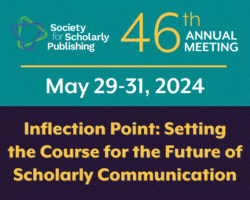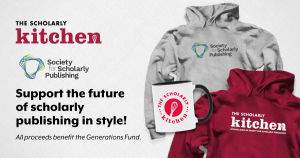Managing Editor, The Plant Cell and Plant Physiology
 Please tell us a bit about yourself (e.g. hometown, current locale, course of study).
Please tell us a bit about yourself (e.g. hometown, current locale, course of study).
I grew up in Severna Park, MD, just outside of Annapolis. After graduating from Severna Park High School (where I wrote in my senior yearbook bio that I would be the next Katie Couric), I attended the University of Maryland, College Park, where I majored in Journalism with a focus on Public Relations and minored in English. My husband, Pete, also graduated from Severna Park High School and attended Maryland. Today, we live in our hometown of Severna Park with our four children. Our kids attend the same schools we did. Our oldest daughter already graduated from Maryland, and we can only hope the rest of our kids will join us as Terps! #GoTerps And spoiler alert: I did not become the next Katie Couric. Read on!
Describe some of your current responsibilities, and what type of organization you belong to.
I am the Managing Editor of The Plant Cell and Plant Physiology at the American Society of Plant Biologists (ASPB). I am so honored to work for such an amazing organization and community. ASPB was a customer of mine in different capacities since June of 2000. I always admired the way ASPB’s publications team treated their vendors and their authors. It has been a dream come true to work as part of the ASPB publications team.
In my day-to-day duties, I oversee a staff of four in executing our peer review and production efforts. These four individuals have worked at ASPB for many years and know our systems inside and out. More importantly, though, they know our authors, editors, and reviewers extremely well. These staff members are highly regarded and well-loved by our community. I count on all of them each and every day for their valuable insights, knowledge of our systems, and deep understanding of our community.
I also manage publications-related vendor relationships. I really enjoy this part of my job because after working for vendors for so many years (first Cadmus Communications [now Cenveo] and then Sheridan Journal Services), I have a real appreciation for the hard work our vendors do on our behalf. I also understand how to partner with our vendors to plan for impactful results with reasonable deadlines and expectations.
What I like most about my job is the trust my boss, Nancy Winchester (Publications Director), places in me. She knows that I understand my first role is as ASPB’s Managing Editor and all of the responsibilities that accompany that job title. However, she has allowed me to take the “other duties as assigned” line on my job description and run with it. Because we do not have a marketing expert on staff, I have worked with others in our publications department to identify and implement a strategic marketing plan to promote our journals. These marketing efforts have expanded to include ASPB’s other departments (membership, community engagement, education, and meetings) to develop an overall, cooperative plan to promote important ASPB initiatives.
Social media has become an important part of my role at ASPB. From blogging to tweeting, our publications staff has discovered that social media gives members of our community a warm “human touch.” Our ASPB social media team uses a blend of planned social media posts and organic, fluid posts that react to activity from members of our community. I have grown my followers to over 1,850 on Twitter, which has been immensely gratifying to me both within the plant biology community and in scholarly publishing as a whole. This past summer at ASPB’s annual Plant Biology meeting, it was so exciting to meet members and authors I had already built relationships with on social media.
I have worked with my ASPB colleagues to develop webinar curriculum to include presentations about mentorship, science communication, and how to use social media as a researcher. I have worked closely with our meetings department to make sure our journals have an important presence at our annual meeting. I really love my traditional managing editor duties combined with an ever-evolving list of relevant, timely tasks.
What was your first scholarly publishing role? How did you get that job? What path led to your current position?
When I graduated from the University of Maryland in December of 1994, I had a brief stint working as a Legislative Aide at the Maryland General Assembly. Because that role only paid the bills during the Maryland Legislative Session (January through April), once April rolled around, it was time to find a year-round job. I began working at a trade association in Washington, DC, where I ultimately became the Manager of Information Services. That job truly allowed me to grow and to understand that a job is what one makes it. I was given so many opportunities in that position, from overseeing our membership database to planning and leading meetings to handling all IT purchases and installations.
However, the commute to DC was starting to wear on me. I saw a newspaper ad (remember those days?) advertising an editorial test for a position in Linthicum, MD. I put my name in to take the test, scored well on it, and the rest is history. I was hired as a Production Editor at Cadmus Professional Communications. Their training program was intense and effective. Trainees learned important STM terms, use of abbreviations, multiple style guides, and so much more. Trainees were not released to work on a society publishing team until the trainer understood our strengths, weaknesses, and personalities. That’s how I came to be paired with ASPB. And that’s when I fell in love with scholarly publishing.
After the birth of my second child, I worked for several years as a freelance STM copyeditor. I learned how to juggle multiple challenging style guides at one time as I bounced from manuscript to manuscript. In 2009, I applied to Sheridan Journal Services and was hired as a Production Specialist. Once again, I was assigned to the ASPB account, much to my delight. I worked my way up at Sheridan, getting promoted first to Senior Production Specialist and then to Publishing Services Group Leader.
After Sheridan, I took a brief career detour into real estate management. Although it sounds like a completely different industry, there are many parallels. Like scholarly publishing, real estate is at a crossroads. Real estate consumers are demanding transparency and openness in the real estate process. The settlement process is moving toward using new technologies, such as blockchain, to ensure confidence in the system. And real estate agent retention is exactly like author retention. Keeping good agents requires prompt and reliable customer service. There are countless brokerages where agents can hang their licenses. The same is true for authors. There are so many journals to submit to, so how do we stay top of mind for our community members?
In February of 2018, I started at ASPB, and I haven’t looked back.
If there was a pivotal moment or key person in your career development, please describe briefly.
Scholarly publishing is a small world. I always tell my kids: “It’s free to be nice and to comb your hair.” I’m glad I have taken my own advice and never burned a bridge. People I thought I would never see again professionally have turned up time and time again in very important ways.
Especially key to my career development were Bernie Stukenborg, Patti Lockhart, and Nancy Winchester.
Bernie and I worked together at Cadmus on the ASPB account. Years after that, Bernie had moved on to Sheridan. He reached out to me and encouraged me to apply to Sheridan. To this day, he is a huge encourager of my career and professional development.
When I was working in real estate, I was very satisfied with my role and the many opportunities it provided me. I received a call from Patti Lockhart, who was ASPB’s Managing Editor at that time. I knew Patti from our time working together at Sheridan Journal Services. She had taken a job at the National Academy of Sciences and was encouraging me to apply for her job. Had it been any other society, I would not have given applying a second thought. ASPB was different, though. In my mind, I had no choice but to apply to work for my favorite customer of all time. I am forever grateful to Patti for reaching out to me about this job.
Last but most important is Nancy Winchester. She is just the best boss I could imagine. She is firm and offers criticism and feedback, but she is also my biggest champion and supporter. She encourages me to do things I would never have thought of doing before. She leads by example. She treats people fairly and with kindness. She’s tough, though, and she expects the best from everyone. She is everything that a mentor and supervisor should be.
What tools, web sites and organizations do you find most valuable for your career development?
The Scholarly Kitchen is an invaluable resource. I rely on it for timely information about the topics most important to our industry.
From a plant biology community/scholarly publishing perspective, Twitter has become extremely important. I can keep up with conferences I’m missing via live-tweeting, learn more about the advances that are most important to our research community, promote my SSP/CSE volunteer work, and so much more with just a simple scroll and maybe a few keystrokes (and well-placed emojis) several times a day.
I value my SSP membership for all I have learned and all of the connections and friendships I have formed. I work on the Marketing and Communications Committee and the Community Engagement Committee (for the DC Regional Committee), and I love every minute of it.
I am a member of CSE and ISMTE. I also get a lot from ALPSP, Copyright Clearance Center, ORCID, and Web of Science events.
I also love attending user group meetings, including those hosted by HighWire Press, eJP, Silverchair, PubFactory, and more. I learn so much from my peers at these events and come home with to-do lists that are miles long.
What are some of the surprises/obstacles that you’ve encountered during your career?
It’s not a surprise to me any longer, but for a time, it was hard to keep up with the constant influx of technical innovations. This gal started out copyediting manuscripts on paper with a purple pen. Those days are long gone!
What do you wish you knew more about?
Honestly, I wish I knew more about everything in publishing. I have embraced this lack of knowledge, though, and I read everything I can get my hands on, plus I look to those with more experience (Nancy Winchester, my SSP colleagues, etc.) for more information.
What advice would you give to people interested in a career in scholarly communications?
Learn your job and do it to the best of your ability. Then, learn more. Take on more responsibility. And don’t shelter yourself. Learn everything you can about your organization and then learn everything about your industry. SSP is a great example of how to learn more.
Check out Jennifer’s work with the American Society of Plant Biologists (ASPB) and Plantae.


